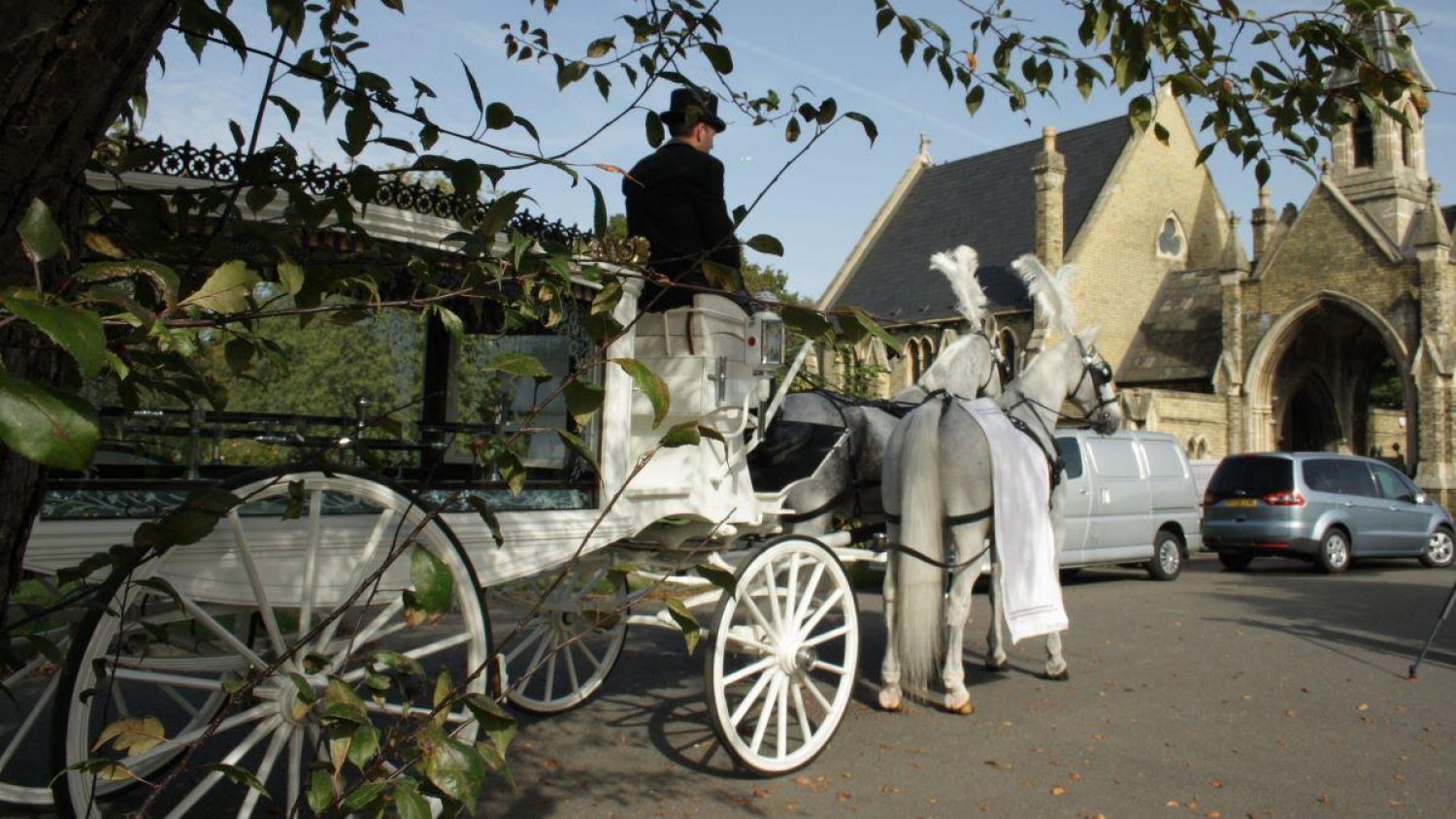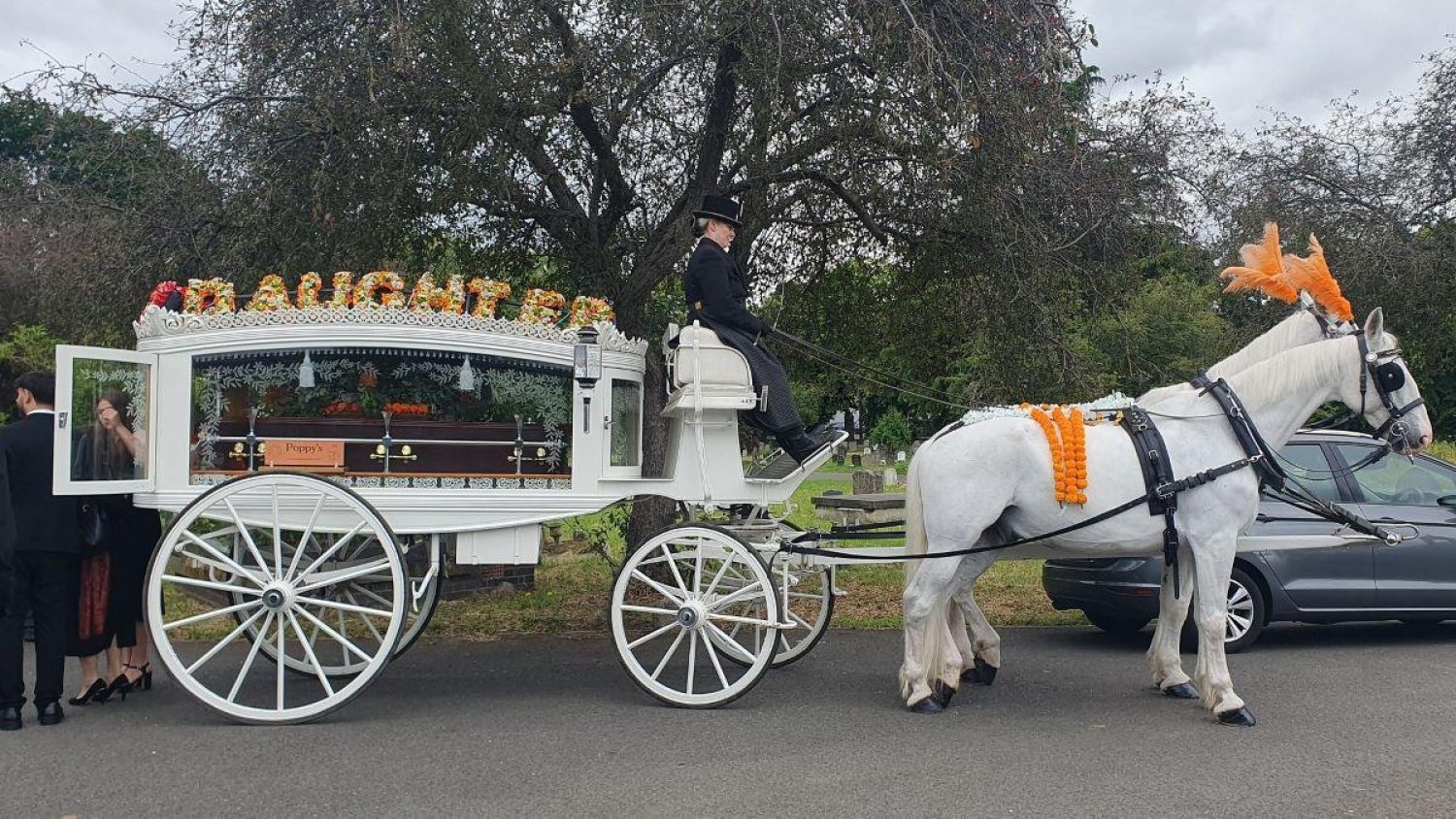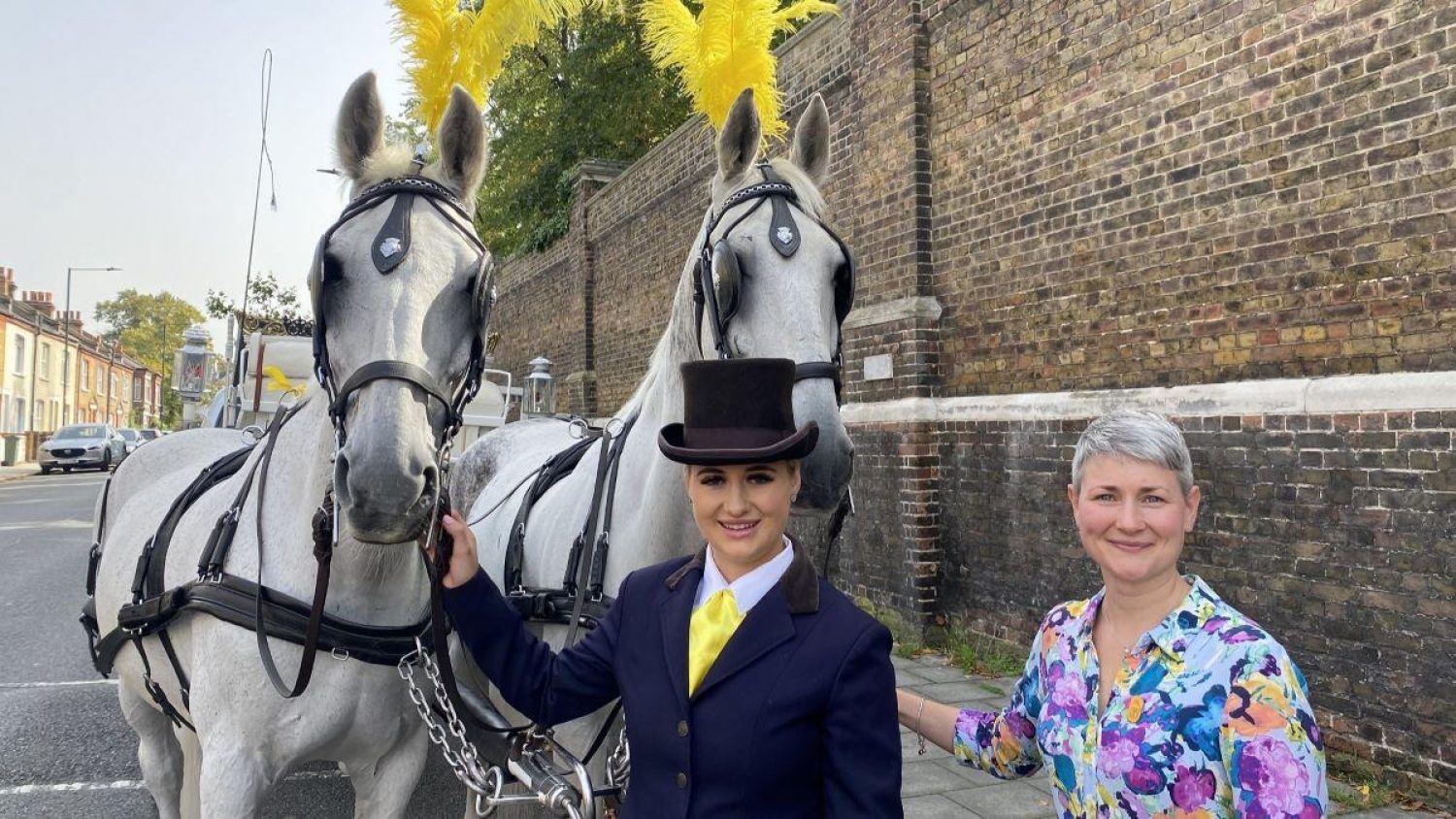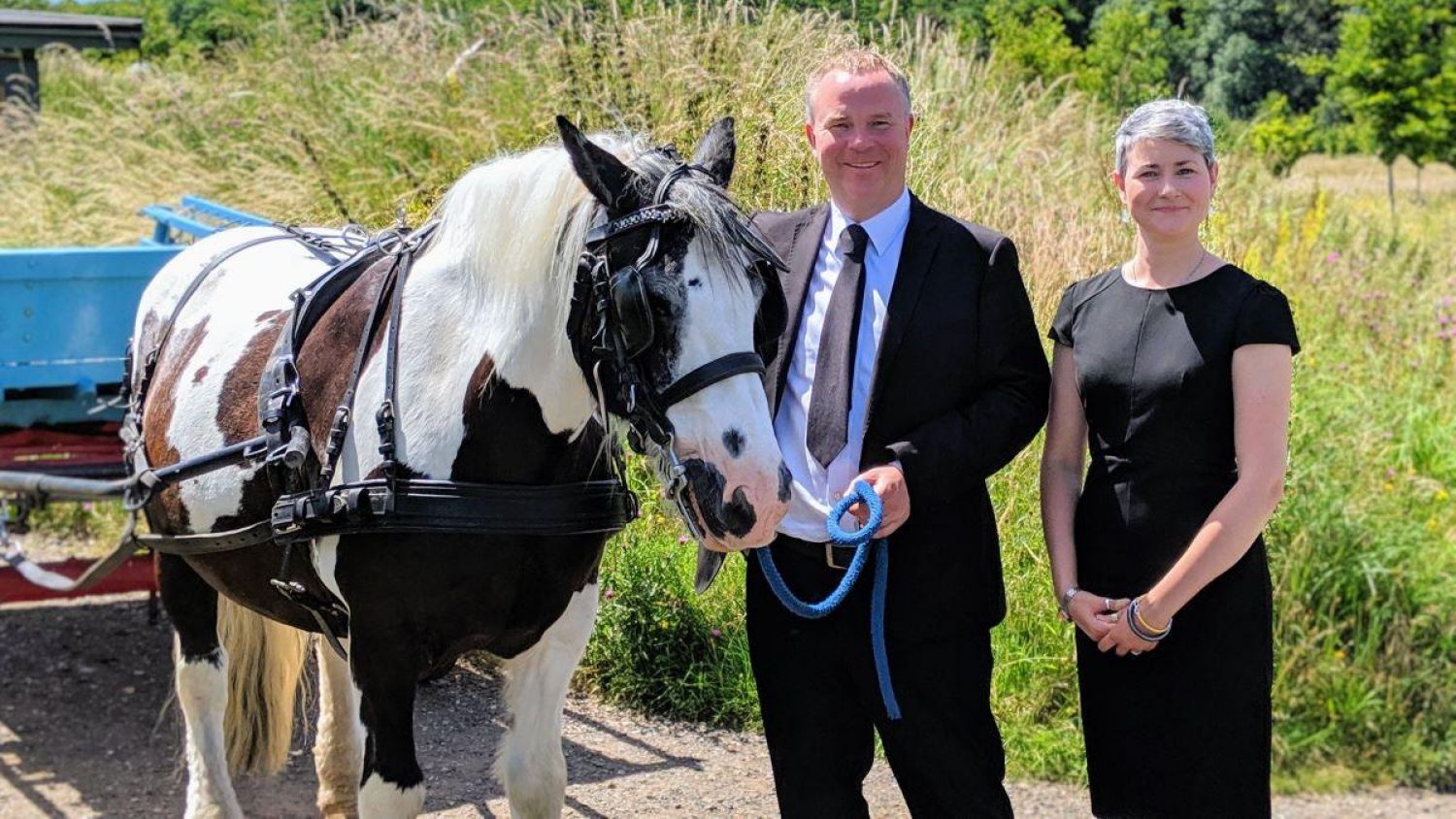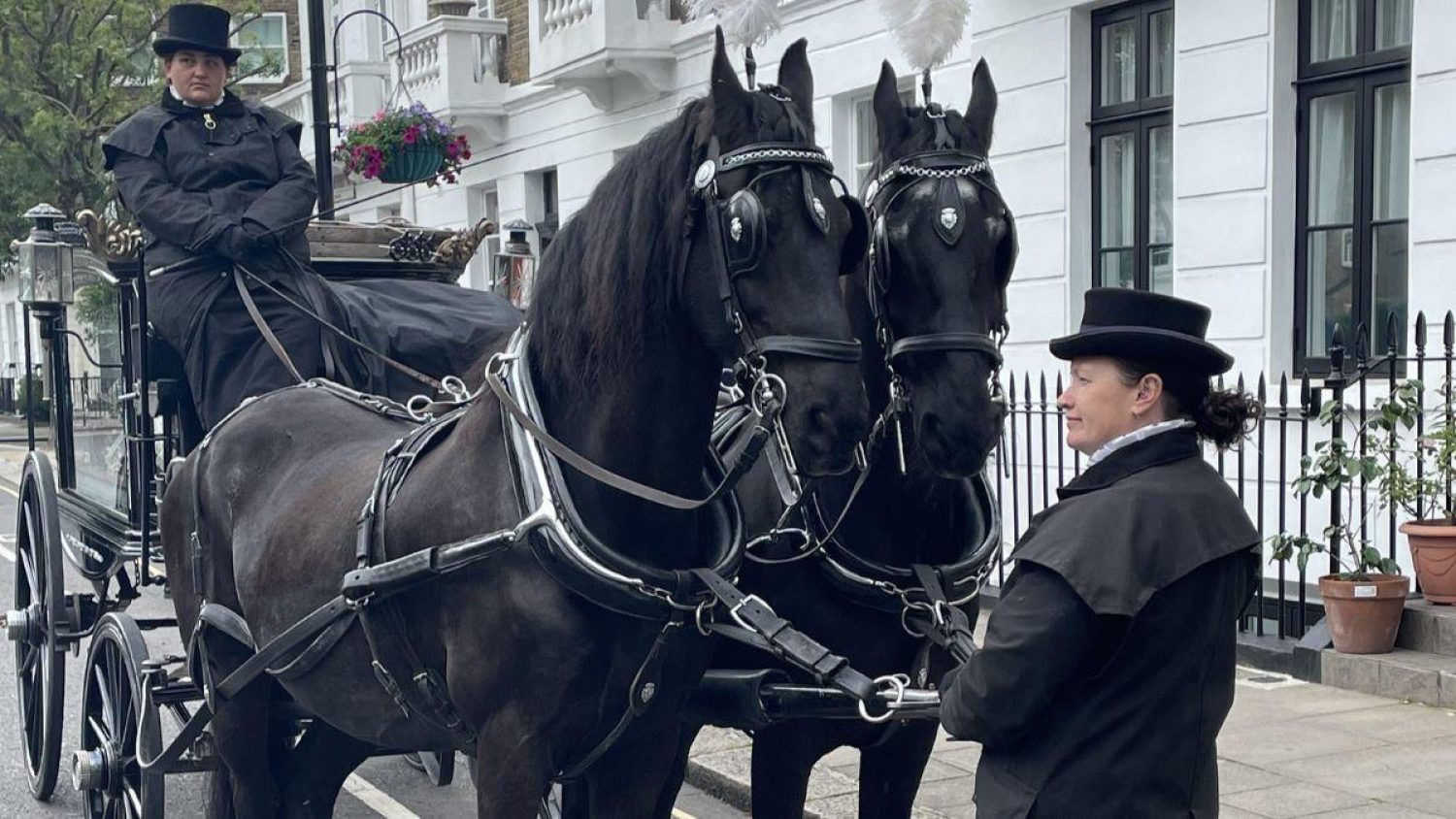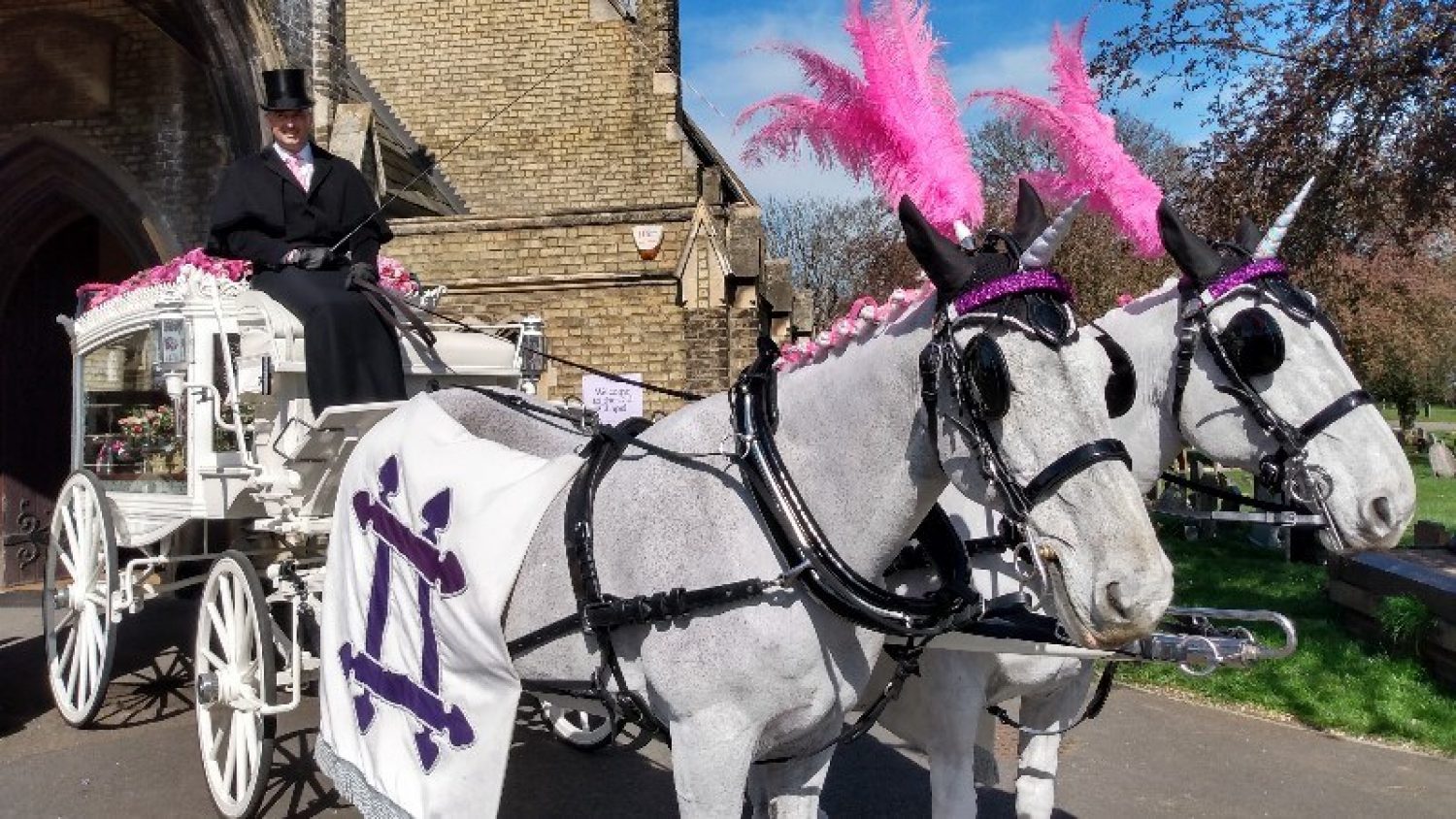Three minute read
We may no longer travel by horse and carriage in our daily lives, but a horse-drawn hearse is still a popular funeral choice. Here, we share some practical tips and surprising facts to help you see whether this is the right option for you.
Horse-drawn funerals in Britain began in medieval times, but only if you were rich or with high social status.
However, like many traditional funeral customs, horse-drawn hearses became popular more widely during the Victorian era. Horses were already a familiar sight on the roads, used in daily life for everything from delivering milk to collecting scrap.
Victorian funeral processions were traditionally led by black horses, with smart black plumes and drapes. Although white horses, as a symbol of purity, were used for the funerals or children or unmarried women, as well as for state funerals.
The use of horses for funerals declined during World War One, when the animals were less readily available. Horse-drawn hearses became even less common in the 1930s onwards, once motorised vehicles became the norm.
Yet there are still many reasons why you might choose a horse and carriage for a funeral today.
1. Keeping with tradition.
If tradition is important to you, or to the person who died, old-fashioned Victorian-style horse-drawn hearses are still going strong. Many people feel this tradition establishes a funeral atmosphere which is respectful, solemn and dignified.
At Poppy’s, we have also organised horse-drawn hearses for clients from many different cultural backgrounds, including Hindu and Traveller families, who draw on their traditions of horse-drawn funerals.
2. Celebrating an affinity with horses.
For someone who loved horses, riding or the outdoor life, a horse and carriage could be a perfect choice.
3. Getting back to nature.
At natural burial grounds, like Clandon Wood in the Surrey countryside, a beautiful, rustic horse and cart can be used to transfer the coffin to the graveside.
4. Setting the tone.
Naturally, a horse-drawn hearse travels more slowly than a motorised one. Many people appreciate making gentler, calmer progress to the crematorium or cemetery and feel that a slower journey sets a more reflective tone for the whole ceremony.
5. Being personal and creative.
You can choose black or white horses. You can also select the colour of drapes, feather plumes or flower garlands that the horses will wear, to reflect a favourite colour or theme. We can even offer horses with unicorn horns and hooves decorated with sparkles!
Did you know?
- Horses travel at about six miles per hour. It’s best to allow ten minutes for every mile, so they can keep up a steady pace and don't have to rush.
- Horses are best for shorter journeys as they can only travel seven or eight miles for each funeral. However, there are options for a longer journey to the cemetery, crematorium, church or other venue. They can be swopped out with other horses to cover the whole route. Alternatively, they can be partnered with a motorised hearse, with the horses covering only the most significant parts of the journey. We can advise on the costs of all these options.
- The welfare of the horses is really important. None of them are worked every day and they are all regularly vetted. On hot days, for their wellbeing, the journeys they travel may need to be shortened.
- Horses can sleep standing up — so sometimes will catch a quick nap during the funeral service!
- Their names can be grand — like Thor or Loki — or very down-to-earth — like Mavis or Dorothy.
- Some of the horses we use have also worked as stunt horses, so you might be able to spot them jumping through fire on ‘Game of Thrones’.
- We work with The Ostler who supply horses and carriages for funerals, as well as all sorts of other events.
- The horses are friendly, approachable and very used to people. They love fuss, so taking photos is welcome.
We certainly love it when these beautiful animals come to Poppy’s!
If you’d like to know more, contact us to talk through all the options for a horse-drawn hearse.
Read more ideas and guidance, including how to choose a crematorium and how to create an order of service.
